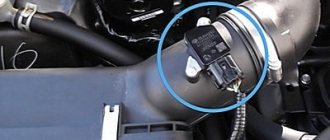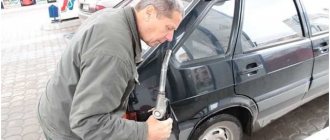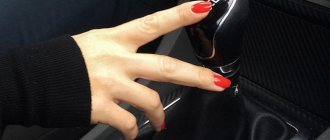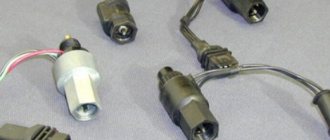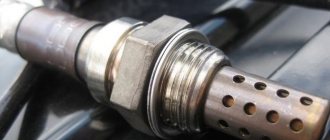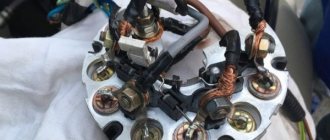When you keep your foot on the clutch pedal for a long time, it quickly burns out and will have to be replaced! This elementary truth is often violated by beginners. And not because it is forgotten, but because driving a car with the clutch half-depressed is more convenient and easier. Therefore, for many car enthusiasts, clutch malfunctions were the reason for the first repair of their first car. A clutch check must be carried out before each vehicle drive in driving schools, and the diagnostics performed often indicate the need for repairs. As a rule, this is associated with changing friction discs.
A little about the device and purpose
The clutch is the main mechanism of a car's transmission, allowing us, without stopping the engine, to move away smoothly and change the intensity of traffic, changing gears while driving.
On passenger cars, single-plate friction clutches with a hydraulic drive are predominantly installed. The mechanism, located outside and inside the basket-casing, bolted to the flywheel, consists of the following parts:
- flywheel;
- driven and driven disks with friction linings;
- springs pressing the drive disk to the flywheel;
- clutch release forks;
- release levers;
- push clutch;
- release bearing;
- pedal shaft and clutch pedal.
Diagnosis of typical main faults
In order to switch gears in the gearbox when accelerating or, conversely, when decreasing it, each time the engine crankshaft is disconnected and again comes into contact with the vehicle’s power transmission. This happens very often, and over time, signs of clutch wear begin to appear in the way the car behaves on the road while driving.
Signs of clutch failure are divided into two main groups. The first is when it does not completely turn off, it “leads”. The second, on the contrary, when it does not turn on completely, or, as they say, “slips.”
The clutch does not disengage (“drive”)
When the discs do not move completely apart when you press the pedal, they say the clutch is “driving.” That is, the disks remain in some contact, and it does not turn off completely. Experienced drivers know how to check the clutch for incomplete disengagement. Diagnosis is simple. If at low speeds with the pedal pressed all the way, first gear is engaged easily and without extraneous noise, the shutdown occurs completely. If switching occurs with difficulty and is accompanied by gear noise, it “drives.”
The reasons for this may be:
- the driven disk linings are broken or the rivets on them are loose;
- decrease in full pedal travel (tight clutch);
- the driven disk is warped and its end runout exceeds 0.5 mm;
- the pressure plate is warped or warped;
- the hub of the driven disk jams on the splines of the input shaft in the gearbox;
- the rivets securing the pressure spring are loose;
- irregularities have formed on the surface of the friction linings of the driven disk.
b) associated with hydraulic drive
- fluid leakage from the hydraulic system;
- air has entered the system.
Elimination of mechanical causes involves adjusting the drive, cleaning and lubricating the splines, straightening or replacing the driven disk and, most often, replacing the friction linings. Every clutch has to be replaced at some point. Problems in the hydraulic system require bleeding to remove trapped air, checking the tightness of connections and the integrity of the pipeline. If necessary, you will have to replace failed parts, such as the main and working cylinders if fluid leaks from them.
Does not turn on (“slips”)
When, while driving, you begin to smell a burning smell, and on a climb your car noticeably slows down and generally begins to accelerate worse, you don’t even need diagnostics: the clutch is slipping. This means that the driven and driven discs do not close tightly enough when the clutch is engaged. There is an easy way to check the clutch. To do this, put the car on the parking brake and start the engine. Squeeze the clutch and engage the gear. Smoothly press the gas pedal and just as smoothly release the clutch. The engine should stall. If it continues to work, it means the clutch is slipping.
Reasons for incomplete inclusion:
- there is no free play of the pedal;
- the friction linings of the driven disk are burnt or worn out;
- oil has got or continues to get on the friction linings, on the surface of the pressure plate and flywheel.
These reasons can also be eliminated by adjusting the drive and replacing the linings. Oil that gets on the rubbing surfaces, which results in a slipping clutch, must be removed by thoroughly washing the contaminated areas with white alcohol. Of course, it is necessary to find out and eliminate the reason for its appearance.
A little about the device
It is difficult to understand the cause of the malfunction if you do not have a minimal understanding of the design and principle of operation of the clutch. It is enough to understand that pressing the pedal provokes movement of the fork and release bearing. The release lever, pressed by the fork, presses on the petals of the diaphragm spring, moving the pressure plate away from the driven disc. The latter, in turn, moves away from the flywheel, thereby stopping the transmission of torque from the crankshaft to the gearbox input shaft.
The shutdown drive can be mechanical or hydraulic. In the first case, the pedal and the release fork are connected by a cable drive. The second type of inclusion requires the presence of a clutch master cylinder. By pressing the pedal, you initiate the movement of the rod, which presses on the piston inside the clutch cylinder. The displaced brake fluid, moving in the lines, presses on the piston inside the working cylinder. The piston, moving, presses the shutdown rod.
What does "leading" mean?
They say that the clutch is engaged if the clutch does not disengage completely. In other words, after pressing the pedal, the driven disk and the engine flywheel are not completely disengaged, which leads to partial transmission of torque to the input shaft of the gearbox.
Symptoms
You can assume that the clutch is slipping based on one symptom - difficulty engaging and disengaging gears. Most often, problems begin with the inclusion of reverse and first gears. The term “difficult” means both the need to apply more force to the gearshift knob and the inclusion with a crunch.
Causes
- Incorrect adjustment of the switching drive. In this case, the useful range of movement of the clutch pedal is not enough to completely separate the flywheel and the friction lining of the driven disc. Often such a malfunction is the result of unqualified repairs. To fix the problem, you need to correctly adjust the pedal free play.
- Deformation of the driven disk. The bending leads to the fact that after the pressure plate is disconnected, the friction lining in the place of the bend continues to touch the flywheel. Are you ready to watch mature porn in more than twenty categories? If there is excessive axial runout, only replacing the driven disk will help. In cases of such clutch malfunction, vibration should be observed when starting to move.
- Weakening or breaking of the diaphragm spring blades. In this case, the force when pressing the clutch release bearing onto the paddles is not enough to completely disconnect the pressure plate from the driven one. As a result, even after pressing the pedal, the clutch is in a partially engaged state. Both manufacturing defects and incorrect adjustment of the release drive (when the clutch is constantly half-squeezed) can lead to breakage of the petals. Natural metal fatigue leads to weakening over time.
- Malfunction of the hydraulic clutch release system. The reason why the crankshaft is not completely disconnected from the gearbox input shaft may be hidden in the working cylinder or hydraulic line. You should monitor the tightness of the system, as due to leakage of brake fluid, the clutch may not disengage completely.
- Cable drive jamming. Over time, the cable may become frayed, which, combined with contamination, leads to limited movement. Therefore, it may seem to the driver that the clutch pedal is depressed, but in fact, the driven disk has not been completely disconnected from the flywheel.
- Difficult movement of the driven disk on the splines. Lack of lubrication, contact with various types of contaminants on the working surface and uneven wear of the splines can lead to the fact that after disconnecting the pressure plate, the gap necessary for separation will not be created between the flywheel and the pressure plate.
- Flywheel malfunction. Severe scuffing and radial distortion will prevent the friction linings and flywheel from completely detaching. The imbalance causes not only poor gear engagement, but also vibrations when starting to move.
- Bending of the fork that moves the release bearing, due to which the stroke of the rod becomes insufficient to bring the release bearing to the petals of the diaphragm spring.
If, after adjustment, problems with gear shifting have not disappeared, it is necessary to disconnect the gearbox and fully diagnose the clutch mechanism. Replacing the clutch cannot be called an easy job, but with proper theoretical preparation and the availability of the necessary tools, you can do it yourself.
Diagnosis of other faults and their symptoms
Extraneous noises also indicate a malfunction in the mechanism. So, an increased noise level when turning off indicates a lubricant leak or wear of the clutch release bearing. It's better to change it.
Noise that occurs when the clutch pedal is released indicates a break or loss of elasticity of the damper springs, the fork spring or breakage of the plates that connect the pressure plate to the housing. » alt=»»> All of the listed clutch malfunctions can be identified using simple diagnostics. Further detailed checking of the clutch should suggest ways to eliminate them.
Let's figure out what kind of unit this is and what it is needed for? The clutch performs an important mission - it transmits torque from the flywheel, which is located on the engine side, to the gearbox. This is necessary to periodically disconnect the engine connection to the transmission.
Continuous operation of the car over time, whatever one may say, will lead to failures in individual systems, and in particular, to clutch failures. This can be caused by faults in the engine or its chassis. Understanding and detecting a clutch malfunction is not difficult and is obvious even to inexperienced drivers. After all, even the smallest glitches in its work are noticeable.
If you regularly inspect the car, all its individual elements and listen to the operation of the engine, then you can detect the problem at an earlier date. Next, you can find out what signs you should focus on and how to correct any problems with the clutch.
Causes of clutch failure
When a unit malfunctions, the behavior of the vehicle as a whole changes noticeably. It is extremely difficult not to notice this.
Typical signs of clutch failure include:
Incomplete inclusion
In other words, the vehicle "drives." This occurs due to the rare disc detachment from the flywheel. As a result, the vehicle moves off abruptly, and jolts also occur when gears are changed, even if this is done as smoothly as possible.
For what reasons does the clutch fail prematurely?
The operating life of this unit is approximately 150-300 thousand km, which is quite a lot. Also, life activity depends on the car itself and its operation. What factors lead to its reduction? So:
- Dangerous driving style: the driver throws the pedal, presses it sharply, which leads to faster wear of the lining.
- The vehicle moves constantly under load. This often applies to commercial vehicles
- If you are towing another vehicle that weighs much more than your vehicle, the clutch may burn out. If you feel burning, you should stop moving immediately.
- Do not hold the pedal halfway down. Only if necessary.
Concept leads clutch
As such, there is no clear definition of this concept. There is no specific fault when the car's clutch starts to slip. This term usually refers to various malfunctions that can lead to incomplete disengagement of the clutch. As a result, slipping and crunching occur during gear changes. However, if the car owner ignores such symptoms of malfunctions, this leads to rapid wear of the discs, subsequently significant shocks appear when shifting gears, and, ultimately, an expensive overhaul of the manual transmission is required.
Start to operate the clutch, that is, it is not completely disengaged, when the release bearing or worn-out discs are worn out. In some cases, the problem lies in a misaligned clutch pedal. Also, incomplete disengagement of the clutch may occur in cases where an air lock appears in the hydraulic system. In each specific case, the repair technology will be different; for example, to adjust the pedal or tighten the cable, it is not necessary to carry out a complex and time-consuming procedure for removing the manual transmission from the car. Whereas, if the release bearing or steel discs are worn out, in such a case it is necessary to use a lift, dismantle the manual transmission and then replace the failed spare parts.
At the first sign of such breakdowns, the car owner needs to contact a service center, but the workshop should be chosen solely taking into account the reviews of other drivers. If the service center allows you to be in the repair area, offers appropriate guarantees for the work performed, and the car owner can control the technicians and are clearly shown the problems with his car, then in such a case you can be completely confident in the quality of the repairs performed. Remember that by contacting the workshop in a timely manner, you can eliminate existing malfunctions, which is called a little pain, but if you ignore such malfunctions, then, ultimately, you will need to completely change the clutch or carry out a major overhaul of the automatic transmission.
Let's sum it up
The term “clutch slipping” usually refers to various malfunctions in which incomplete disengagement of the clutch is noted during a gear change. A characteristic crunching sound occurs and wheels may slip. With such problems, the gearbox will require serious repairs, including a complete restoration of the car. The car owner, at the first signs of malfunctions, needs to contact the service center, perform competent diagnostics and repair the breakdowns, which will avoid serious malfunctions with the clutch and manual transmission.
13.10.2019
What actions to take if a clutch malfunction occurs?
It is extremely important to listen to your vehicle. Timely detection of a breakdown and its elimination (the sooner the better) will help to avoid more serious consequences.
Fixing a clutch malfunction means replacing the entire system or its individual element. Another disadvantage: only experienced and fanatical car owners will be able to cope with this task on their own. Most drivers who do not have their own garage and certain skills are unable to replace the unit and have to go to a service station.
Another disadvantage of a unit malfunction is the cost of replacing it or replacing individual elements. If you have a foreign car, be prepared for huge costs.
Found a clutch malfunction on the road , what to do in such a situation? You need to immediately go to a car service center, because you won’t be able to drive such a car for a long time. But what to do if the service station is far away and there is no one to tow it? A trick like double-depressing the clutch pedal will help you.
When upshifting, you need to depress the pedal, shift to neutral and release the pedal. Then we depress the pedal again, switch to a higher gear and release it again. When downshifting, you need to depress the clutch pedal, go to neutral, release it, add gas, depress it again, downshift and release the pedal again.
If you still decide to repair the clutch system yourself, here are brief instructions for locating the fault: the most important thing is to correctly and very carefully disassemble the unit basket, inspecting all the discs, pay attention to worn parts, determine the condition of the springs and the number of oils
Drive faults
Each type of drive has its own specific disadvantages. It is worth noting that many problems with clutch operation are related to the drive.
Cars often use a mechanical cable drive. The main malfunctions of a cable-driven clutch are as follows:
- violation of regulation;
- rope break;
- snacking.
The cable is adjusted using a nut, which allows you to change the length of the braid relative to the cable itself. If adjusted incorrectly, the cable becomes too tight or weakened, which leads to incorrect transmission of the driver's force to the mechanism.
Cable breakage is usually due to corrosion. With this malfunction of the clutch, its functioning completely stops.
Worn clutch cable
Snagging is a problem associated with the breaking of only part of the cable threads. And since the cable threads are metal, they begin to rest against the braid, making movement difficult. Because of this, control of the mechanism is significantly complicated (it is difficult to depress the pedal or it does not return to its normal position).
The hydraulic drive has its own malfunctions:
- insufficient amount of fluid;
- pipeline rupture;
- air entering the system;
- jamming of the piston of the main or working cylinder.
The electronic drive, consisting of a control and actuator mechanism, sensors and a control unit, also has its own malfunctions (also relevant for the electric drive):
- malfunction of one of the sensors;
- failure of the electric motor (actuator);
- short circuit or open circuit;
- wear and misalignment of the clutch pedal.
Since such a mechanism is one of the latest developments for friction clutches, it is worth taking a closer look at it.
The essence of its operation is quite simple - the control mechanism receives a signal from the clutch pedal, as well as from the gearbox selector position sensor, transmits it to the electronic unit, and that in turn to the actuator. A special feature of this drive is the ability of the electronic unit to independently control the clutch mechanism, without driver participation. This is very convenient, since such a drive brings the control closer to the operation of a robotic box. For example, when driving in a traffic jam, the electronic unit can independently engage and disengage the clutch based on sensor data.
But this also has its drawbacks. Failure of any of the sensors can lead to control of the clutch mechanism becoming uncontrollable. For example, a malfunction of one of the sensors may result in the control unit receiving incorrect information. Such clutch malfunctions can result in instability of engine speed, increased fuel consumption, or even failure of the entire mechanism.
TRANSMISSION FAULT. ADJUSTMENTS. EXPLOITATION
CLUTCH FAULTS
Typical signs of a clutch malfunction are: slipping, incomplete engagement (the clutch “drives”), abrupt engagement, noise and knocking in the clutch.
If, when the car is moving, a specific burning smell of the clutch friction linings appears, or slow acceleration of the car, a decrease in speed, or slow climbing are observed, then the reason for this is clutch slipping, i.e., the clutch is not fully engaged. To finally make sure whether the clutch is slipping, with the engine running, tighten the parking brake handle all the way and engage the gear. Then, smoothly pressing the throttle pedal, slowly release the clutch pedal. If the engine stops with the clutch pedal fully released and the throttle open, the clutch does not slip, but if the engine continues to run, the clutch slips.
HOW TO ELIMINATE CLUTCH SLIPPING
To eliminate the causes of clutch slipping, you must first check and, if necessary, adjust the free play of the clutch pedal. If the clutch still slips during normal free travel of the pedal, then you should contact a specialist at a service station. If this is not possible, you can eliminate the causes of clutch slipping yourself. To do this, you need to unscrew the bolts securing the casing to the flywheel, having first removed the gearbox. Then remove the clutch cover assembly with the pressure plate. This releases the driven disk with the clutch friction linings. In this case, you should carefully check by external inspection whether the functional linings of the driven disk are oily or whether there is increased wear.
To eliminate oiling of the friction linings, thoroughly rinse the linings with gasoline (kerosene), wipe them dry and clean them with fine sandpaper. Replace the heavily oiled driven disk with a new one complete with friction linings and also eliminate the causes of oiling. When the friction linings of the driven disc wear out, the clutch also slips, since the free play of the clutch pedal decreases.
With slight wear of the driven disk linings (the lining is completely worn out if the distance between the rivets and the working surfaces is less than 0.2 mm), clutch slipping can be eliminated by adjusting the free play, and with large wear, only by replacing the driven disk assembly with the worn linings. Friction linings should also be replaced when cracks are detected on their surfaces, uneven wear (one-sided scuffing) and burnout.
It is advisable to check the condition of the friction surfaces of the flywheel, clutch housing, and pressure plate at a service station, since special devices and instruments are required.
Clutch slipping can occur due to swelling of the rubber sealing rings and the rubber ring floating valve of the master cylinder piston and clogging of the compensation hole or swelling of the rubber sealing rings of the clutch release cylinder.
CAUSES OF CUFF Swelling
The reasons for the swelling of rubber parts are the use of brake fluid of poor quality or inappropriate composition, or the ingress of gasoline, kerosene, or mineral oil into the working fluid. To eliminate this malfunction, it is necessary to remove the master and slave cylinders of the clutch drive, disassemble them, wash the entire hydraulic drive system with alcohol or fresh brake fluid, replace damaged rubber parts, clean the compensation hole with soft wire and fill it with brake fluid of the appropriate composition and quality.
INCOMPLETE CLUTCH ON/OFF
When the clutch is not fully engaged, the car moves jerkily, shifting gears is difficult, since when you press the clutch release pedal, the disks do not completely separate, but the drive shaft of the gearbox continues to rotate.
A common sign of a clutch malfunction is also its incomplete disengagement, i.e. the clutch “leads”.
The complete release of the clutch can be checked as follows. At low engine speeds, depress the clutch pedal all the way, and if first gear is engaged silently, the clutch is fully engaged. If, when engaging first gear, a strong noise of gears is heard and the gear does not engage or engages with difficulty, then the clutch “drives.” In this case, the free play of the clutch pedal should be adjusted. If the free play of the clutch pedal is within the normal range, then air may have entered the hydraulic drive system or there may be a leak of working fluid. In this case, it is necessary to remove air from the hydraulic drive of the system in the sequence indicated below.
Then, with the clutch pedal pressed all the way, check the tightness of the pipeline, its connections and the working cylinder.
HOW TO FIX WORKING FLUID LEAKS
If leakage of working fluid is detected, tighten the connection until the leak is eliminated, and replace any damaged parts of the clutch release hydraulic drive that are found. If the inspection reveals fluid leaks from the working cylinder, it must be removed from the vehicle by first unscrewing the two screws securing its housing, the supply tube, the pusher and the spring and disassembled. To disassemble the working cylinder, remove the protective cap, pusher and piston from its body. To replace damaged rubber parts (O-rings), you must also disassemble the piston by removing the retaining ring, washer and spring. The parts should be thoroughly washed with fresh brake fluid or alcohol.
If there is no damage to the cylinder mirror and rubber parts, reassemble the working cylinder and check for leaks. If damage to the rubber parts is found or there are holes and marks on the mirror of the working cylinder, these parts should be replaced and the working cylinder should be installed in place.
Leakage of working fluid from the hydraulic clutch system can occur as a result of a leak in the clutch master cylinder, due to damage to the internal sealing rings (cuffs), cylinder mirrors, or contamination of the working parts of the unit. In this case, it is necessary to remove the clutch release master cylinder by unscrewing the two nuts securing it to the pedal bracket and removing the hose connecting the cylinder to the reservoir.
HOW TO DISASSEMBLE THE MASTER CYLINDER
To identify the cause of the leakage of the clutch release master cylinder, you should disassemble it in the following sequence: remove the rubber protective cap, retaining ring, piston, sealing ring, piston annular floating valve and spring. Thoroughly rinse all parts with brake fluid and carefully inspect their condition. If there are no marks, burrs or holes on the master cylinder mirror, as well as if the internal rubber rings are in good condition, install the cylinder in place. If necessary, replace faulty parts or the master cylinder assembly.
Malfunctions
In the text below, coupling failures are arranged in descending order. The popular ones are described first, and those that occur infrequently are described at the end.
The pedal fails, the gears do not engage
Among the frequent troubles with the clutch, there is a situation when the pedal, after pressing it with your foot, does not offer resistance and falls to the floor. The engine is already running, but the gear does not engage. In this case, the clutch drive is faulty
That is, the cable is broken or the hydraulic drive is damaged. Perhaps the fork got stuck on the hinge because it was worn out. Repair consists of replacing the damaged part. Then you need to adjust the knot. The fork can sometimes be fixed by welding.
Linings burn out
When starting, accelerating or on a hill, the driver feels an unpleasant odor. The linings are burning. The disk with springs is worn out to such an extent that there is practically nothing left of the friction surface.
The springs may simply wear out a lot. But this rarely happens, except on very old or Chinese-made equipment. What to do? There is only one way out - replace the driven disk. Moreover, the sooner the better. Otherwise, due to slipping of the planes, the basket and flywheel will wear out very quickly. Since the procedure requires removing the gearbox, it is advisable to also change the release bearing at the same time.
Its service life is approximately the same as that of the driven disk, and it is relatively inexpensive. And to install a new one, you need to remove the box. It’s better to do it right away, so that you don’t have to dismantle the gearbox again soon - this is difficult and expensive.
The revs are rising, but the speed is not
It happens that at a significant speed, when a high gear is engaged, the driver sharply adds gas and the engine, as expected, “sounds up”. But for some reason the speed does not change. The reason for this breakdown is similar - the linings are worn to the limit.
Well, what about the notorious smell? You can't hear him! That's right, because the car goes fast. The engine section and the bottom are well ventilated. In very rare cases, the cause of the malfunctions described above is an oily clutch.
The clutch is noisy
Another nuisance is that when the driver squeezes the clutch, strange sounds are heard from this unit. Some kind of incomprehensible grinding or hum is heard, something is making noise, etc. In the vast majority of cases, it is the bearing that has worn out. The repair technology depends on the car. On new machines, the damaged part will have to be replaced. On older ones, you can fill it with lubricant.
Theoretically, you can drive with such a breakdown for quite a long time. Well, the sounds will be unpleasant, okay, so what? In practice, one must take into account the possibility of complete jamming of the bearing. In general, it is better to immediately install a new one. You can boil the release valve in refractory grease. But this won't last long.
The named “trouble” has options. If you hear a high-pitched sound (a nasty squeak) when you press the pedal, then the bearing is completely jammed. It needs to be replaced urgently, otherwise the clutch basket will “fly” and repairs will cost much more.
If you hear a quiet squeak and possibly a grinding noise, then it is possible that the flywheel bearing has failed. True, this rarely happens. Usually this part is changed during an engine overhaul or when the clutch is removed.
Vibration
It happens that you start driving or change gear while driving, and then a vibration appears with a characteristic unpleasant frequent knocking, the car jerks. This may occur due to failure of the motor mounts. If they are intact (or they were replaced, but the vibration did not disappear), then the problem is in the clutch:
- Damper springs break or become severely worn.
- The disk with springs is completely destroyed or its friction linings have partially fallen off.
- The basket is cracked.
Problems also occur on the dual-mass flywheel. Another possibility is that the presser feet are not set correctly. But this is a very rare case, because... For the last couple of decades, baskets with claws have been installed only on UAZ vehicles. To figure out what exactly happened, you will have to remove the box and disassemble the clutch.
There are two options for resolving the issue. You can immediately buy a complete clutch, and maybe a dual-mass flywheel, and change everything. It will be more expensive, but it will be quick. Otherwise, you first need to disassemble the clutch and find the cause. And then order what is out of order and replace it.
This will turn out much cheaper, but longer. And, again, it is recommended to replace the release bearing as work progresses. Otherwise, it is possible that after some 10,000 km you will have to remove the clutch again, so it remains to be seen which is cheaper.
